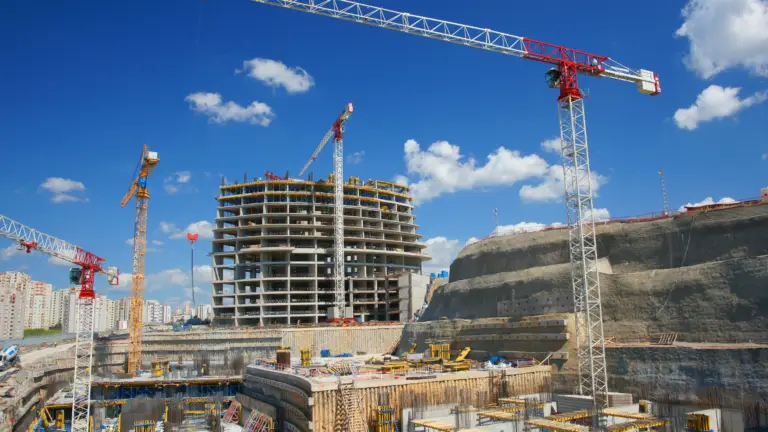The construction of commercial warehouses is a fundamental aspect in the development and operation of businesses across different industries. These spaces play a crucial role in the storage, distribution, and logistics of products, making meticulous planning in their design and construction essential to ensure efficiency and functionality.
To view AH Construction’s projects click HERE
Planning and Design
Identification of Needs:
Before initiating any construction project, it’s essential to understand the specific needs of the business. What type of products will be stored? What is the expected inventory flow? Answering these questions will help determine the required size, design, and features for the warehouse.
Strategic Location:
The warehouse’s location is crucial for logistical efficiency. It should be conveniently situated near distribution areas, transportation hubs, and customers, minimizing transportation costs and delivery times.
Efficient Design:
The warehouse’s design should optimize the available space. Considering shelving systems, aisle distribution, loading and unloading areas, as well as implementing technology to maximize storage capacity and operational efficiency.
Materials and Construction
Selection of Suitable Materials:
Choosing durable and suitable materials for the environment is crucial for the warehouse’s strength and longevity. From metal structures to reinforced concrete, materials should adapt to the business’s specific needs and environmental conditions.
Regulatory Compliance and Safety:
Adhering to construction regulations and standards is essential. Furthermore, robust safety measures must be implemented to protect both the structure and workers during the warehouse’s construction and operation.
Technology and Sustainability
Integration of Technology:
The implementation of advanced technologies, such as automated inventory management systems, IoT (Internet of Things), and logistic tracking software, can significantly enhance the warehouse’s operational efficiency.
Focus on Sustainability:
Sustainable construction is increasingly relevant. Utilizing renewable energies, efficient resource usage in design, and eco-friendly practices can reduce long-term operational costs and minimize environmental impact.The construction of warehouses in the commercial sector is a complex process that requires careful planning, design, and execution. A well-constructed and appropriately designed warehouse can enhance operational efficiency, reduce costs, and increase a business’s competitiveness in today’s market.
For more information about AH construction click HERE




